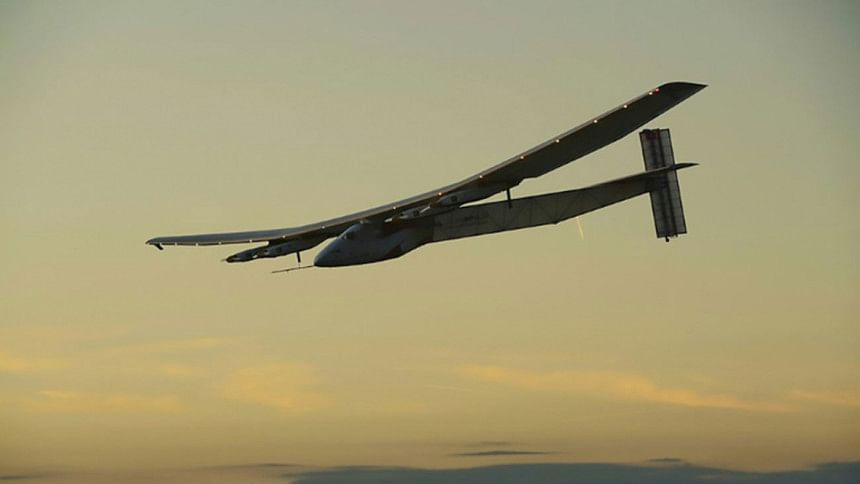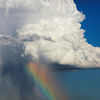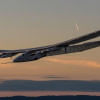Solar plane powers on over Atlantic after turbulence

The Solar Impulse 2 plane went through "a long night of turbulence" over the Atlantic, its weary pilot said Wednesday as he continued on the challenging leg of its sun-powered trip around the world.
The experimental plane, which took off from New York's John F. Kennedy airport on Monday, is flying over the Atlantic at the hands of Swiss adventurer Bertrand Piccard and is due to land in Spain's southern Seville airport early Thursday.
By around 2100 GMT on Wednesday, the aircraft -- which is powered in the night sky by energy supplied by its 17,000 photovoltaic cells -- had completed 89 percent of its 6,000-kilometre (3,700-mile) flight across the Atlantic.
"After a long night of turbulence and little sleep, I see the first light of the day," Piccard tweeted earlier on Wednesday.
"Already the last afternoon above the Atlantic. Three days are feeling short," he tweeted later, with a photo of white clouds.
Piccard also said he spotted a commercial airplane flying by at one point on Wednesday.
"Solar Impulse 2 mut have caught his eye since their flight path curved slightly," he tweeted.
The voyage marks the first solo transatlantic crossing in a solar-powered airplane, and Piccard has been getting little sleep as he survives on short catnaps.
During his crossing, he has seen whales cavorting in the waters beneath the plane, a gorgeous full moon in the nighttime sky, and more.
"You will not believe me, but to my right, I see an iceberg in the Atlantic Ocean. Check it out!" he tweeted a day ago.
No heavier than a car but with the wingspan of a Boeing 747, Solar Impulse is being flown on its 35,400-kilometre trip round the world in stages, with Piccard and his Swiss compatriot Andre Borschberg taking turns at the controls of the single-seat plane.
Borschberg piloted a 6,437-kilometre flight between Japan and Hawaii that lasted 118 hours, smashing the previous record for the longest uninterrupted journey in aviation history.
The plane, now on the 15th leg of its east-west trip, set out on March 9, 2015 in Abu Dhabi, and has flown across Asia and the Pacific to the United States with the sun as its only source of power.
After the Atlantic crossing, Piccard and his colleague have two options: they could either make their way to Abu Dhabi with one more stop, as originally planned, or they could try to fly the rest of the way in one go.
The plane typically travels at a mere 48 kilometres per hour, although its flight speed can double when exposed to full sunlight.
Borschberg and Piccard say they want to raise awareness of renewable energy sources and technologies with their project.

 For all latest news, follow The Daily Star's Google News channel.
For all latest news, follow The Daily Star's Google News channel. 








Comments